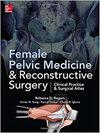Feasibility and Research Insights From a Randomized Controlled Trial for Recurrent Urinary Tract Infection Prevention in Postmenopausal Women Using Vaginal Estrogen Therapy.
IF 1.4
4区 医学
Q3 OBSTETRICS & GYNECOLOGY
Female Pelvic Medicine and Reconstructive Surgery
Pub Date : 2022-06-01
DOI:10.1097/SPV.0000000000001171
引用次数: 2
Abstract
Objective The aim of the study was to inform feasibility parameters (eligibility, enrollment, and retention) for a recurrent urinary tract infection (rUTI) prevention randomized controlled trial (RCT). Methods We assessed feasibility parameters of an RCT of postmenopausal women with uncomplicated rUTIs using vaginal estrogen. Participants were randomized to either d-mannose or a control arm. All participants were required to be using vaginal estrogen and to have a negative urine culture before 90-day trial participation. An RCT exit survey and separate survey for UTI patients (N = 196) were added to inform feasibility parameters and patient preferences for rUTI prevention and study participation after slower enrollment than anticipated. Results At the time of interim and subsequent futility analyses, 545 patients had been evaluated for frequent/recurrent UTIs from March 1, 2018, to January 18, 2020. Of these, 213 (39.1%) had culture-proven rUTIs and 71 (33.3% of those with culture-proven rUTIs) were eligible for the RCT. Reasons for ineligibility included complicated UTIs, premenopausal/perimenopausal status, or existing UTI prevention regimen. Of the 71 eligible participants, 57 (80.3%) enrolled, and 44 began their planned 90-day study period (77.2%; 80.0% after excluding 2 participants awaiting negative urine cultures at the time of analysis). The study was halted before conclusion. Study retention (76.0%–83.7%) was slightly lower than expected. Urinary tract infection survey patients demonstrated significant interest in rUTI research participation. Conclusions We learned several important lessons that can benefit future research. Many patients with frequent/recurrent UTIs are interested in research, but rigorous eligibility criteria and referral urine culture documentation made recruitment challenging.绝经后妇女阴道雌激素治疗预防复发性尿路感染的随机对照试验的可行性和研究见解。
目的:本研究的目的是为一项预防尿路感染(rUTI)的随机对照试验(RCT)提供可行性参数(资格、入组和保留)。方法:我们评估了一项使用阴道雌激素的绝经后无并发症ruti妇女的随机对照试验的可行性参数。参与者被随机分配到d-甘露糖组或对照组。所有的参与者都被要求在90天的试验前使用阴道雌激素并进行阴性尿液培养。加入了一项随机对照试验(RCT)退出调查和针对UTI患者的单独调查(N = 196),以了解在入组速度低于预期后,rUTI预防和研究参与的可行性参数和患者偏好。结果:在中期和随后的无效分析时,从2018年3月1日到2020年1月18日,545名患者被评估为频繁/复发性尿路感染。其中,213例(39.1%)有培养证实的ruti, 71例(33.3%)有培养证实的ruti符合RCT的条件。不合格的原因包括复杂的尿路感染,绝经前/围绝经期状态,或现有的尿路感染预防方案。在71名符合条件的参与者中,57人(80.3%)入组,44人开始了计划的90天研究期(77.2%;80.0%(排除2名等待分析时尿液培养阴性的参与者)。这项研究在得出结论之前就停止了。研究保留率(76.0% ~ 83.7%)略低于预期。尿路感染调查患者对rUTI研究的参与表现出显著的兴趣。结论:我们学到了一些重要的经验教训,对未来的研究有益。许多频繁/复发性尿路感染患者对研究感兴趣,但严格的资格标准和转诊尿液培养文件使得招募具有挑战性。
本文章由计算机程序翻译,如有差异,请以英文原文为准。
求助全文
约1分钟内获得全文
求助全文
来源期刊

Female Pelvic Medicine and Reconstructive Surgery
OBSTETRICS & GYNECOLOGY-
CiteScore
2.10
自引率
12.50%
发文量
228
期刊介绍:
Female Pelvic Medicine & Reconstructive Surgery, official journal of the American Urogynecologic Society, is a peer-reviewed, multidisciplinary journal dedicated to specialists, physicians and allied health professionals concerned with prevention, diagnosis and treatment of female pelvic floor disorders. The journal publishes original clinical research, basic science research, education, scientific advances, case reports, scientific reviews, editorials and letters to the editor.
 求助内容:
求助内容: 应助结果提醒方式:
应助结果提醒方式:


